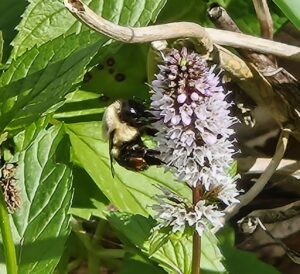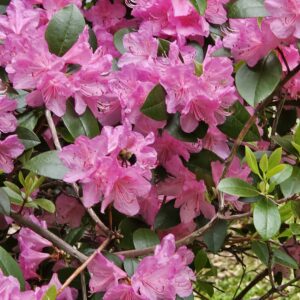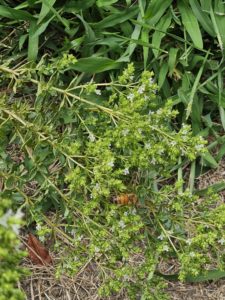This past week I came across two amazing and very different stories, but in both Lyme disease appears. So read with an open mind - because they may or may not work out. But I will say that living in the NY metro area, tick diseases are a big deal, and we all know people who have gotten diseases from ticks. Most get successfully treated with antibiotics, but then there are those people who are suffering years later. The first article is by Dr. Christie Wilcox (a freelance science writer and postdoctoral researcher). Do go read the whole article for her fascinating account of venoms. From Digg:
Poison As Medicine: How A Bee Sting Saved My Life
“I moved to California to die.” Ellie Lobel was 27 when she was bitten by a tick and contracted Lyme disease. And she was not yet 45 when she decided to give up fighting for survival. Caused by corkscrew-shaped bacteria called Borrelia burgdorferi, which enter the body through the bite of a tick, Lyme disease is diagnosed in around 300,000 people every year in the United States. It kills almost none of these people, and is by and large curable – if caught in time. If doctors correctly identify the cause of the illness early on, antibiotics can wipe out the bacteria quickly before they spread through the heart, joints and nervous system.
But back in the spring of 1996, Ellie didn’t know to look for the characteristic bull’s-eye rash when she was bitten – she thought it was just a weird spider bite. Then came three months with flu-like symptoms and horrible pains that moved around the body. Ellie was a fit, active woman with three kids, but her body did not know how to handle this new invader. She was incapacitated. “It was all I could do to get my head up off the pillow,” Ellie remembers.
As time wore on, Ellie went to doctor after doctor, each giving her a different diagnosis. Multiple sclerosis. Lupus. Rheumatoid arthritis. Fibromyalgia. None of them realised she was infected with Borrelia until more than a year after she contracted the disease – and by then, it was far too late. Lyme bacteria are exceptionally good at adapting, with some evidence that they may be capable of dodging both the immune system and the arsenal of antibiotics currently available. Borrelia are able to live all over the body, including the brain, leading to neurological symptoms. And even with antibiotic treatment, 10–20 per cent of patients don’t get better right away. There are testimonies of symptoms persisting – sometimes even resurfacing decades after the initial infection – though the exact cause of such post-treatment Lyme disease syndrome is a topic of debate among Lyme scientists.
I just kept doing this treatment and that treatment,” says Ellie. Her condition was constantly worsening....So she packed up everything and moved to California to die. And she almost did. Less than a week after moving, Ellie was attacked by a swarm of Africanised bees....Bees – and some other species in the order Hymenoptera, such as ants and wasps – are armed with a potent sting that many of us are all too aware of. This is their venom, and it’s a mixture of many compounds. Perhaps the most important is a tiny 26-amino-acid peptide called melittin, which constitutes more than half of the venom of honey bees and is found in a number of other bees and wasps.
“I just went limp. I put my hands up and covered my face because I didn’t want them stinging me in the eyes… The next thing I know, the bees are gone.” When the bees finally dissipated, her caregiver tried to take her to the hospital, but Ellie refused to go... But Ellie didn’t die. Not that day, and not three to four months later...She believes the bees, and their venom, saved her life.
The idea that the same venom toxins that cause harm may also be used to heal is not new. Bee venom has been used as a treatment in East Asia since at least the second century BCE...Despite the wealth of history, the practical application of venoms in modern therapeutics has been minimal....Over the course of the 20th century, suggested venom treatments for a range of diseases have appeared in scientific and medical literature. Venoms have been shown to fight cancer, kill bacteria, and even serve as potent painkillers – though many have only gone as far as animal tests.
The more we learn about the venoms that cause such awful damage, the more we realise, medically speaking, how useful they can be. Like the melittin in bee venom. Melittin does not only cause pain. In the right doses, it punches holes in cells’ protective membranes, causing the cells to explode. At low doses, melittin associates with the membranes, activating lipid-cutting enzymes that mimic the inflammation caused by heat. But at higher concentrations, and under the right conditions, melittin molecules group together into rings creating large pores in membranes, weakening a cell’s protective barrier and causing the entire cell to swell and pop like a balloon.Because of this, melittin is a potent antimicrobial, fighting off a variety of bacteria and fungi with ease.
After the attack, Ellie watched the clock, waiting for anaphylaxis to set in, but it didn’t. Instead, three hours later, her body was racked with pains. A scientist by education before Lyme took its toll, Ellie thinks that these weren’t a part of an allergic response, but instead indicated a Jarisch–Herxheimer reaction – her body was being flooded with toxins from dying bacteria. The same kind of thing can happen when a person is cured from a bad case of syphilis. A theory is that certain bacterial species go down swinging, releasing nasty compounds that cause fever, rash and other symptoms. For three days, she was in pain. Then, she wasn’t.“I had been living in this… I call it a brown-out because it’s like you’re walking around in a half-coma all the time with the inflammation of your brain from the Lyme. My brain just came right out of that fog. I thought: I can actually think clearly for the first time in years.”
With a now-clear head, Ellie started wondering what had happened. So she did what anyone else would do: Google it. Disappointingly, her searches turned up very little. But she did find one small 1997 study by scientists at the Rocky Mountain Laboratories in Montana, who’d found that melittin killed Borrelia. Exposing cell cultures to purified melittin, they reported that the compound completely inhibited Borrelia growth. When they looked more closely, they saw that shortly after melittin was added, the bacteria were effectively paralysed, unable to move as their outer membranes were under attack. Soon after, those membranes began to fall apart, killing the bacteria.
Convinced by her experience and the limited research she found, Ellie decided to try apitherapy, the therapeutic use of materials derived from bees...She started on a regimen of ten stings a day, three days a week: Monday, Wednesday, Friday. Three years and several thousand stings later, Ellie seems to have recovered miraculously. Slowly, she has reduced the number of stings and their frequency – just three stings in the past eight months, she tells me (and one of those she tried in response to swelling from a broken bone, rather than Lyme-related symptoms).
Since the 1997 study, no one had looked further into bee venom as a potential cure for Lyme disease, until Ellie. Ellie now runs a business selling bee-derived beauty products called BeeVinity, inspired after, she says, noticing how good her skin looked as she underwent apitherapy.....In addition, she sends some of the venom she purchases – which, due to the cost of the no-harm extraction method she uses, she says is “more expensive than gold” – to Eva Sapi, Associate Professor of Biology and Environmental Science at the University of New Haven, who studies Lyme disease.
Sapi’s research into the venom’s effects on Lyme bacteria is ongoing and as yet unpublished, though she told me the results from preliminary work done by one of her students look “very promising”. Borrelia bacteria can shift between different forms in the body, which is part of what makes them so hard to kill. Sapi has found that other antibiotics don’t actually kill the bacteria but just push them into another form that is more dormant. As soon as you stop the antibiotics, the Borrelia bounce back. Her lab is testing different bee venoms on all forms of the bacteria, and so far, the melittin venom seems effective...And they still don’t really know why the venom works for Ellie, not least because the exact cause of post-treatment Lyme disease symptoms remains unknown. “Is it effective for her because it’s killing Borrelia, or is it effective because it stimulates the immune system?” asks Sapi. It’s still a mystery.
 There have been so few bees in my garden the last few years that I get excited when I see one. This bee seems to really like the flowers of my mint plant.
There have been so few bees in my garden the last few years that I get excited when I see one. This bee seems to really like the flowers of my mint plant.



 Conserving native bees for their
Conserving native bees for their